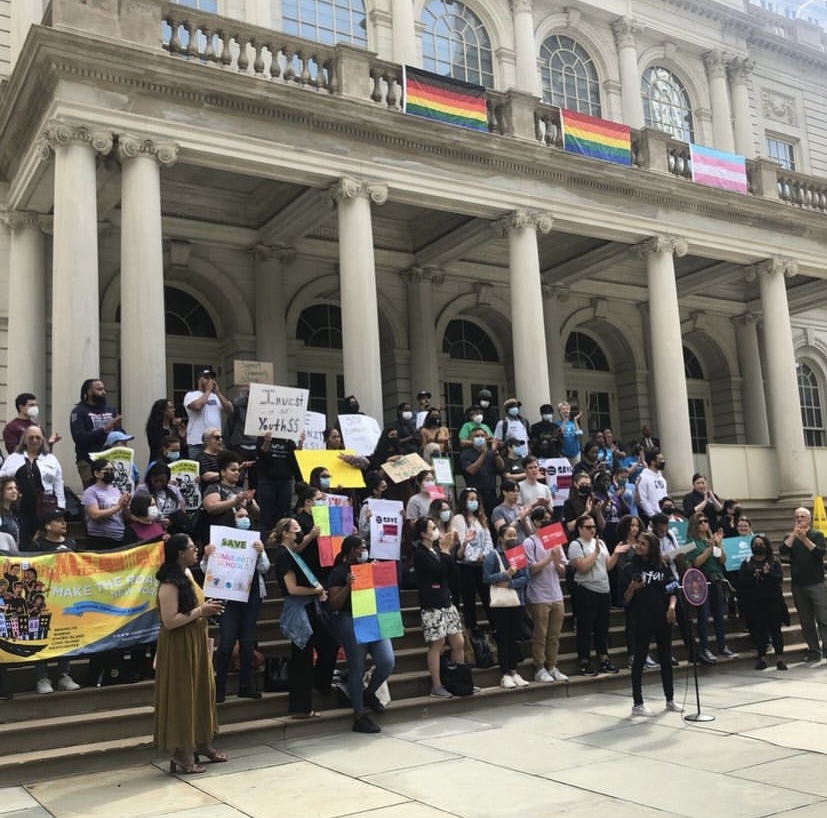SAYA was slated to lose half its budget
By Jessica Meditz
South Asian Youth Action, or SAYA, is a 501(c)3 youth development organization headquartered in Elmhurst, whose primary mission is to provide immigrants and students of color with exposure to new opportunities.
It is among several other organizations funded by the New York City Community Schools Fund, which is essentially a partnership between school staff, families, youth, and the community to ensure that students have the tools they need to learn and succeed.
According to the Community Schools website, these services include “health care, mentoring, expanded learning programs, adult education, and other services that support the whole child, engage families, and strengthen the entire community.”
For a brief period of time these organizations and their respective school communities were worried, as they were slated to lose about $9.16 million of their allocated funds from the city.
But on Friday, the city reached an agreement on a $101 billion budget for the 2023 Fiscal Year, which will restore the funds and add an additional $14 million to support the initiative.
Youth organizations like SAYA, whose most expansive program serves the South Asian student population at Richmond Hill High School, were overjoyed by the news that they’d be able to continue their services.
“I think it made us a lot more hopeful about the advocacy that we do on behalf of our youth, and that as a coalition of organizations, when we work together, we’re able to affect change on a larger scale,” Saphia Najafee, chief development officer at SAYA, said.
“We’ll certainly be doing advocacy work to make sure that we’re all set for next year,” she continued. “We’re obviously really thrilled by everything, but we also know that there’s a lot more work we need to do.”

Richmond Hill High School houses SAYA’s largest program
SAYA is part of the Coalition for Community Schools Excellence, which rallied in front of City Hall in early June to call for the restoration of funds.
They were joined by City Councilwoman Shahana Hanif, Councilwoman Alexa Avilés, Councilwoman Sandy Nurse, and Councilman Lincoln Restler.
“Community schools in my district have become the cornerstone of our community, providing much-needed health, mental health, and family services,” Nurse said at the rally.
“The fact is, our schools alone cannot provide the full support that students and families need for our youth to get the most out of their education. These schools need partnerships to help address the life challenges that our students and families are going through: homelessness, housing insecurity, poverty, and lack of access to health care,” she continued. “The community school model has proven to increase attendance, graduation, and college acceptance rates. We need the mayor to invest the $9.16 million in funding to the 52 community schools that are facing major cuts that will completely undermine their success.”
Through this funding, SAYA receives about $900,000 to carry out their work. With the proposed cuts, they were at risk of a $400,000 total decrease.
In addition to its programming at Richmond Hill High School, SAYA also serves local schools including Thomas Edison High School, P.S. 124, and J.H.S. 202 Robert H. Goddard, where they provide mental health services, outreach for student attendance, college access programming, and after school clubs.
Sonia B. Sisodia, executive director of SAYA, said that the reason for the proposed cuts was given last year when the funding formula was changed for Community Schools by the Department of Education.
“It was framed that the DOE had created a more equitable formula, but the formula is not very equitable when it results in cuts in a high need neighborhood made up of many immigrants and mostly folks of color. Richmond Hill High School is a large high school that really relies on partnership with SAYA and the services that we’re able to provide.” she said. “Fast forward to this year, we were under the assumption—given the focus of the city on things like mental health, getting students back into the school building, and enrichment offerings as students continue to get accustomed to school and life post-pandemic—that the cuts were not likely, since these are all the various services that the Community Schools model actually supports.”
Until more details about the city’s budget become available to the public, Sisodia did not comment on the restoration of funds.
She does, however, want people to remain aware of the situation and the overall goal of SAYA, which continues to offer essential services to students since its founding in 1996.
“Our mission is to really affirm our students and our young people who don’t typically have spaces that center them, that are for them. As a South Asian myself, who went to public schools, I never had that affirmation from my school community,” Sisodia said.
“It’s so important that folks have mentors and role models that they connect with … and I think that New York City really needs to invest more in nonprofits that are led by people of color,” she continued.
“There’s not enough investment in true community based organizations.”



